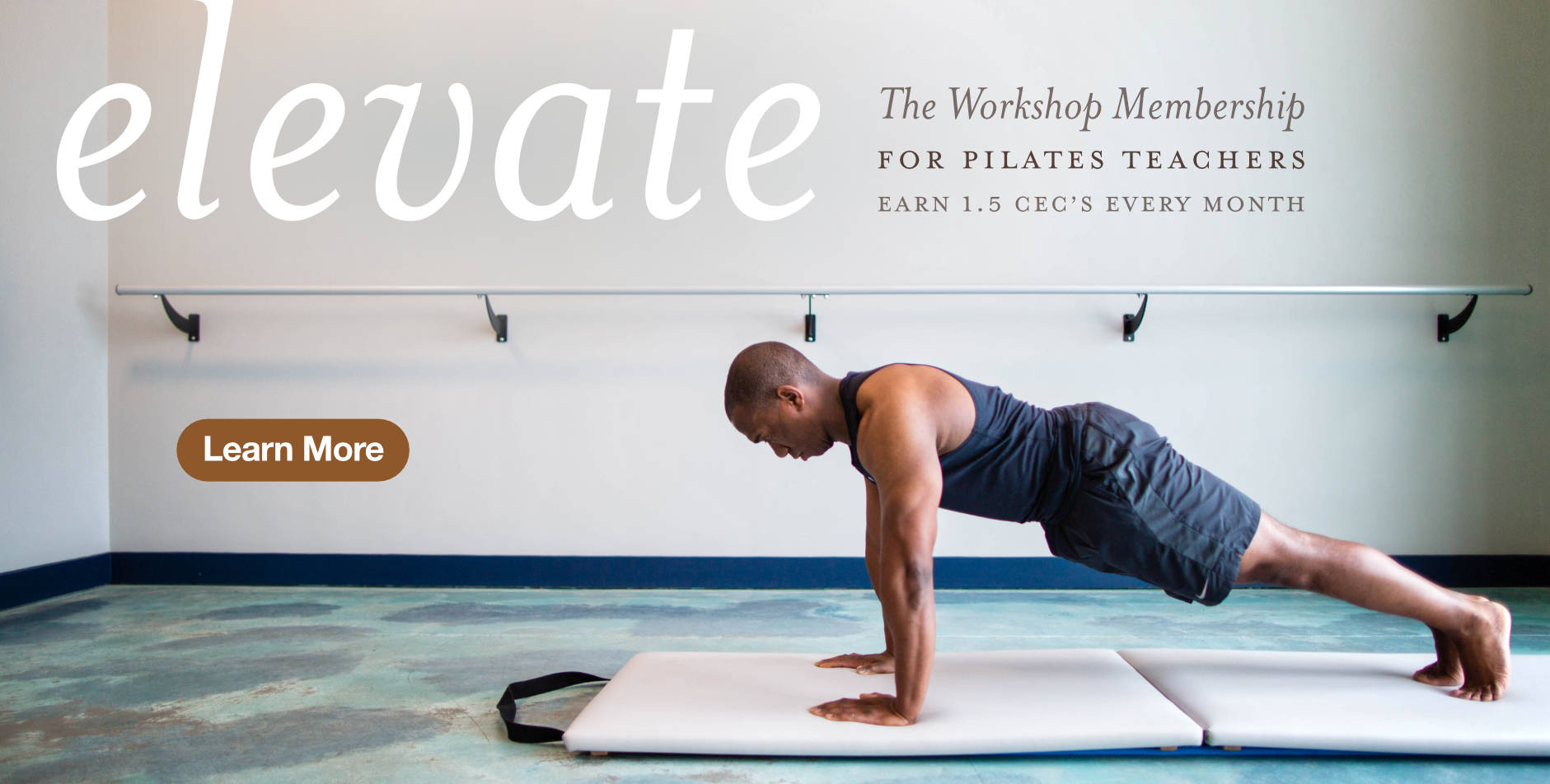Small Weights Pack a Punch
January 14, 2024
The small weights, which weigh only 1-3 pounds (or .4-1.3 kilos), might seem like nothing, but these tiny little weights can pack a punch for our posture muscles in the arm weight series. The complete series consists of ten exercises and takes about 8-10 minutes. Repetitions are kept at about 3-5 and include a variety of positions and different relationships to gravity. The movements are simple, so most cues given after the exercise directions relate to nuances in posture, alignment, or breathing. This series can be used as a warm-up or an ending to your mat or apparatus classes and is appropriate for almost all populations. Try pairing this series with the Wall Series for a complete posture mini-workshop.
The standing work, including the arm weight series (shown here), standing magic circle, wall, and other standing balance/strength/agility movements, was an essential part of Joe’s repertoire, and Romana included them regularly. Challenging the body upright in the gravity field without spring and apparatus assistance shows us where we’re strong and weak. For all the standing exercises, the requirement is complete coordination of the body with the entire focus of the mind. Romana would smile knowingly and chuckle as she watched us sweat and try hard to master these skills. She gave the Arm Weight Series to improve our standing posture and placement and to help with a graceful carriage. It also tones the arms, reinforcing the arms working from the back, which makes for a beautiful, strong back.
The setup begins with a posture checklist, allowing you to teach the essentials of standing and total body placement from the feet to the head. Begin the series with the feet parallel and hip width. Then, use the following 7 points to focus on posture details you can reinforce as you move during all the upright movements.
Weight is distributed 50/50 between both feet.
- The center of the hip (ball and socket joint) over the front of the heels
- Lower abs are pulling in and up, the tailbone lengthening straight down
- Collarbones and shoulders over the ball of the feet
- Ribcage flush with the ASIS
- Sternum lifted
- C7 aligned with the occiput
Each exercise has two parts: the contract phase and the resist phase. However, keep the main focus on posture! You’ll notice so many little things as they move, and that’s when you can offer suggestions to “lift taller,” “check your weight distribution,” etc., cueing within the rhythm of the movement. Work at a pace that isn’t too slow or fast, and be clear about your tempo.
Keep it moving by establishing a solid rhythm and dynamics and add a balance periodically for added challenge.
The sequence below follows the order of Romana (circa 1995). Between exercises, there is a spine release. Release the spine by hanging over with bent knees and slowly rolling up one vertebra at a time, allowing the weights to increase the spine stretch while the abdominals assist the lift when rolling up. The breath is full, deep, and natural except in the side bend and chest expansion, where a directed breathing pattern increases the effect of the movement. The exercises are listed below, and the short video follows.
The Exercises
Biceps: biceps curl with a wrist extension at three heights: shoulder height, low, side
Boxing: The stance is parallel at hip width. Flat back hinged at the hips. Elbows bent, palms up under shoulders. The right arm extends forward palm down while the left extends back palm up. Both arms return. Change sides.
(Spine release*)- Release the torso down over the thighs to relax the spine. Roll up slowly one vertebra at a time until the head lifts last.
Side Bend: Pilates stance. Start with one arm next to the temple and the other arm down at your side. The exercise is in four counts.
1. Bend side 2. Fold the arm around the head
3. Return to center 4. Switch arms
Spine release: Release the torso down over the thighs to relax the spine. Roll up slowly one vertebra at a time until the head lifts last.
Bug: Parallel stance. Hinge forward at the hips, keeping the spine straight and the knees slightly bent. Arms are rounded, and they both lift and lower (like the hug)
(Spine release*)
Zip up: Pilates stance. Both hands move up like a zipper to mid-chest.
Shave: Pilates stance. Both hands together behind the head to lift and lower.
Triceps: Parallel stance. Hinge forward at the hips with the spine straight and the knees slightly bent. Arms hang down; then biceps curl in and out. Arms straighten, extend back, and extend the wrists. Lower to start position.
(Spine release*)
Chest Expansion: Arms at chest height. Pull down and back (inhale). Turn the head right and left (hold your breath). Return arms forward (exhale).
Sparklers: Hold the weights at the bottom. Circle outwards 8x raising the arms forward and 8x circling inwards, lowering.
Side Lunge: Lunge diagonally as the arms raise to the ears. Hold that position as the arms lower to the hips and up to the ears. Then, step back in one motion. Change sides.
*Spine Release: Release the torso down over the thighs to relax the spine. Roll up slowly one vertebra at a time until the head lifts last.
This article was initially published in the Pilates Intel Newsletter on Oct. 18, 202,3
Filed under: Movement Matters

